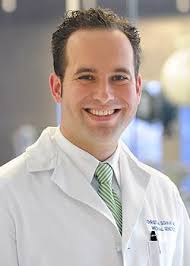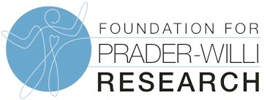When Dr. Christian Schaaf began medical school, pediatrics was his plan. But it was the “medical mystery” cases that drew him in, and most of those mysteries had genetic roots. That curiosity eventually led him to identify what would become known as Schaaf-Yang syndrome (SYS), a rare genetic disorder caused by mutations in the MAGEL2 gene.

“The real magic of rare diseases is that you never stop learning,” says Dr. Christian Schaaf. “Each week, you see something that you have never encountered before.”
The Discovery of Schaaf-Yang Syndrome
It started with a teenager whose mother wondered if he had Prader-Willi syndrome. His early history of hypotonia, feeding difficulties, and undescended testicles fit the profile, but PWS testing came back negative. Genome sequencing revealed a truncating mutation in MAGEL2, and within weeks, three more patients with the same type of mutation were found. The findings were published in Nature Genetics, and in 2013, the condition was officially named Schaaf-Yang syndrome, using the common convention of honoring the doctors who first described it.
What began with a handful of cases has grown into a global community. Today, researchers are in contact with nearly 400 SYS families worldwide, a number that continues to grow rapidly thanks to advances in genetic testing.
The Most Promising Directions in Research
One of the most intriguing discoveries so far is that some individuals carry typical SYS mutations but do not display symptoms. Dr. Schaaf believes these unique cases may be key to future breakthroughs. “They may be holding important clues that can teach us how to overcome SYS,” he explains.
Researchers are now working to answer several key questions:
-
Can scientists rescue the toxic effects of the truncated MAGEL2 protein?
-
Is it possible to “un-silence” the maternal copy of MAGEL2?
-
Could oxytocin, given during infancy, address key symptoms of SYS?
-
What role do small nucleolar RNAs (snoRNAs) play in MAGEL2 function?
Advances in genetic medicine are also opening new doors. “Treatment with antisense oligonucleotides gives us hope," says Dr. Schaaf. Antisense oligonucleotides have already changed the lives of patients with other rare genetic disorders. For example, nusinersen (Spinraza®), an ASO therapy, was approved in 2016 for spinal muscular atrophy (SMA). SMA, like SYS, is a neurodevelopmental condition caused by a single-gene problem. Before nusinersen, children with the most severe form of SMA often did not survive past infancy. Today, thanks to this ASO therapy, many children with SMA are sitting,
CRISPR, a powerful gene-editing technology, also holds potential for SYS treatments. CRISPR works like scissors on DNA. Guided by a small piece of RNA, it can cut, delete, or replace genetic material. For SYS, the hope is that CRISPR might one day be used to “silence” the defective paternal copy of MAGEL2 and “unsilence” the intact maternal copy—essentially switching off the broken gene and switching on the healthy one.
Advancing SYS Research: Why does Registry Matter?
 At the center of progress is one essential research partner: the SYS community itself. The launch of the Global SYS Registry in the spring of 2025 marked a pivotal step forward, creating a place where families can directly contribute to advancing science and shaping the future of care.
At the center of progress is one essential research partner: the SYS community itself. The launch of the Global SYS Registry in the spring of 2025 marked a pivotal step forward, creating a place where families can directly contribute to advancing science and shaping the future of care.
The Registry is not just a database; it’s the foundation on which discoveries are built. Every survey completed adds to a clearer picture of how SYS affects individuals across ages and stages of life. These insights help researchers recognize patterns, identify urgent needs, and test new ideas that may lead to treatments.
“Families are the driving force and the motivation of everything we do,” says Dr. Schaaf. “The Registry ensures that their voices will continue to shape research priorities. We need more families to join and keep their data updated—it’s the foundation for discoveries still to come.”
Participation in the Registry empowers families to transform their lived experiences into knowledge that fuels breakthroughs. The more robust and complete the data, the faster researchers, clinicians, and pharmaceutical partners can develop interventions that truly reflect the needs of the SYS community.
A Personal Commitment
For Dr. Schaaf, his work with SYS goes far beyond the lab; it's personal. “It gives me tremendous joy—especially the close connection we have to the SYS families. My wife and I have four children of our own, but the SYS kids feel like extended family to me.”
He shares that he has been continually inspired by the resilience of children with SYS and their parents, referring to both the parents and children as 'warriors'. “They’ve shown us over and over again that you should never underestimate their potential.”
That sense of commitment isn't just words. Dr. Schaaf has made it a priority to travel annually to the U.S. for SYS conferences, where he meets face-to-face with families, listening, encouraging, and giving them hope for the future.

Hope for the Future
Looking ahead, Dr. Schaaf is optimistic. Because SYS does not cause major damage to brain structure, he sees hope that many symptoms - caused by disruptions in neuronal balance - can be at least partially reversed, even when treatment begins after birth.
His message to families is one of unwavering hope:
“Never give up hope. We are in this together. Look at how far we’ve come in just 12 years. I will not stop working until we find a treatment that profoundly improves the quality of life for people living with SYS.”
FPWR is proud to partner with Dr. Schaaf and his outstanding team. Their commitment and expertise continue to push the boundaries of what’s possible, and we are deeply grateful for the contributions they’ve made to advancing SYS research. Together, we look forward to the discoveries still to come and to the day when more effective treatments and cures are within reach.
You can be part of this progress too. By joining the Global SYS Registry, you help provide the real-world data that makes research like this possible.







